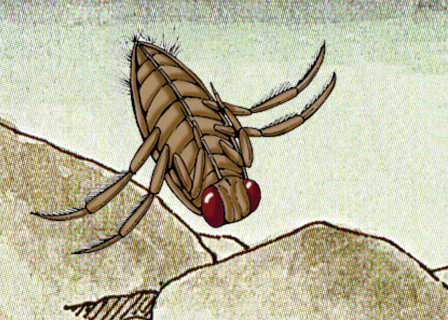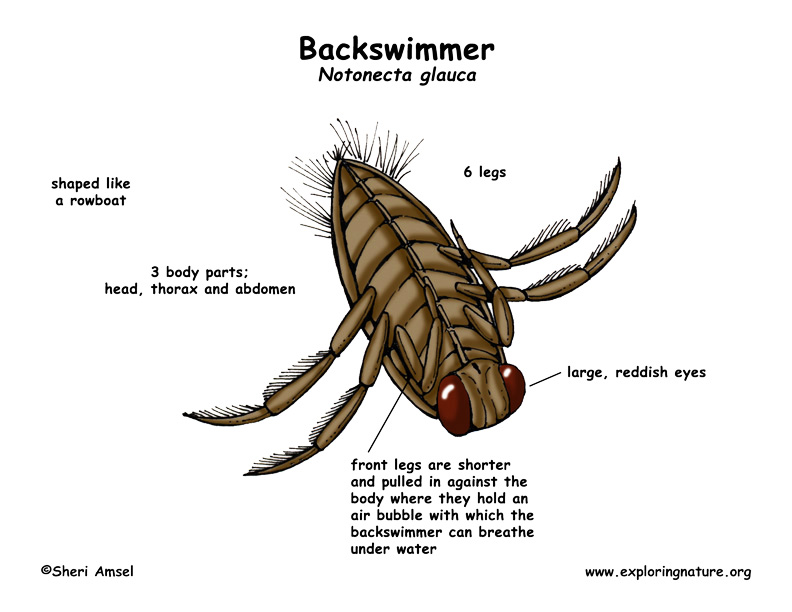

They are found all over North America and Europe.
They live in ponds and slow-moving streams.
They are small, brownish-green insects with large, reddish eyes. Like all insects, they have six legs. Its front two pair of legs are short and the rear pair are long with hairs at the end. They swim upside-down and look like a rowboat. They carry a bubble of air on their belly which is covered with hairs to keep water off the tiny holes (spiracles) that it breathes through.
They swim on their back with their legs above the water. They use their front legs to grab prey and their back legs for paddling. They bite.
They eat insects and small tadpoles.
They lay their eggs on the stems of water plants.
Kingdom: Animalia
Phylum: Arthropoda
Class: Insecta
Order: Hemiptera
Family: Notonectidae
Genus: Notonecta
Species: N. glauca
When you research information you must cite the reference. Citing for websites is different from citing from books, magazines and periodicals. The style of citing shown here is from the MLA Style Citations (Modern Language Association).
When citing a WEBSITE the general format is as follows.
Author Last Name, First Name(s). "Title: Subtitle of Part of Web Page, if appropriate." Title: Subtitle: Section of Page if appropriate. Sponsoring/Publishing Agency, If Given. Additional significant descriptive information. Date of Electronic Publication or other Date, such as Last Updated. Day Month Year of access < URL >.
Amsel, Sheri. "Backswimmer" Exploring Nature Educational Resource ©2005-2024. December 13, 2024
< http://www.exploringnature.org/db/view/Backswimmer >

